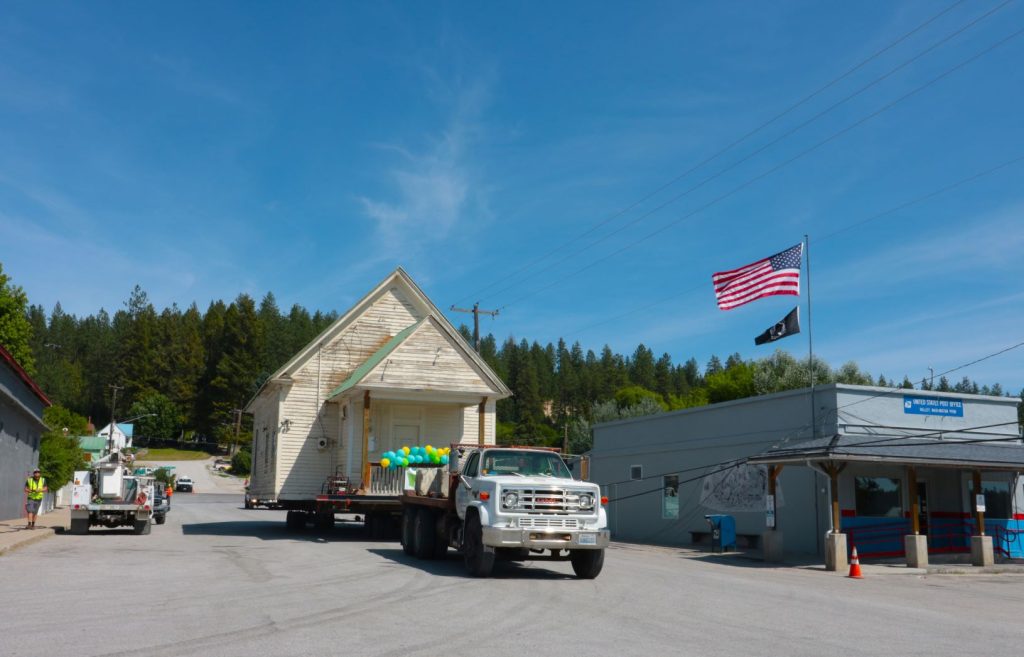For the Silverado Express Newspaper

While locally we have shortages of office, light manufacturing, and other business-related spaces, available housing has been lacking at crisis levels. “We’re in a crisis right now and we need to find a way out of it,” Spokane County Commissioner Josh Kerns told KXLY news back in August of this 2021. “The average family in this community can’t afford the average house in this community.”
And that’s not just in Spokane; housing prices have skyrocketed all over the State of Washington. The state’s “runaway champ” however, according to Dan Bertolet of Sightline.org, is Spokane, “where from 2017 to 2021, home values rose by 81 percent, and rents by 52 percent.”
The solution – to build more homes – sounds like it would be simple, but it’s not. Zoning laws and the State of Washington’s Growth Management Act (GMA) throw a monkey wrench into the equation.
“The biggest hindrance to single-family construction in Washington State is the Growth Management Act,” Commissioner Kerns told KXLY.
Of course, the original intention of the Growth Management Act over 30 years ago was to deal with exponential growth that was rapidly causing municipalities difficulties trying to keep up with the demand for services. “And while housing developments spread, resource lands and critical areas were consumed to meet the demand. These problems eventually gave rise to the comprehensive plan,” westernplanner.org reported in 2017. “Another tool that came out of the growth management movement was impact fees, which are assessed to each new development to pay for the services necessary for each new structure. They are used to cover future costs of running facilities and services to newly developed properties. Not every community uses impact fees, but those that do have found great success with this particular planning tool.”
Zoning and safety regulations serve to ensure “… the development of necessary and sufficient infrastructure to support residents, businesses, and industrial facilities,” Pickett, Ray, and Silver states on their website. “Zoning laws, in general, are designed to separate residential properties from commercial properties. They are intended to prevent oil refineries, manufacturing plants, or other types of businesses from building in residential neighborhoods. These types of businesses can impact home values, noise levels, air pollution, and the safety of children in the area.”
In relation to the GMA, the City of Tumwater’s website explains that it has “14 goals that comprehensive plans are required to address.” Those include: “Urban Growth, Reduce Sprawl, Transportation, Housing, Economic Development, Property Rights, Permits, Natural Resource Lands, Open Space/Recreation, Environment, Citizen Participation, Public Facilities/Services, Historic Preservation, and Shorelines.”
The GMA’s attempt at controlling sprawl and preserving historic buildings has sadly flipped; it now does quite the opposite. Minimum lot sizes for single family homes vary by county, but on average can be between five and 20 acres, actually encouraging sprawl. These minimum lot restrictions also make it nearly impossible to move historic buildings to new locations to spare them from demolition.
“It’s an invisible loss – you just don’t see it because you don’t know where they are,” structural mover Jeff Monroe said. Jeff has moved a number of buildings in Stevens County including the historic Little White Schoolhouse in Valley.
Jeff referred to some numbers from back in 2019 when another mover identified 75 buildings in Seattle for which demolition permits were pulled. Those homes would have literally been free – given to whomever wanted to move them – but there was nowhere to put them. “Only 13 of the 75 in Seattle were moved,” he said. “Of 11 we identified in Jefferson County in 2019 – we moved two.”
He estimates that over the GMA’s existence, 10,000 free homes were lost to demolition. “We’re at least 10,000 houses behind where we should be in the state – it would really help. It isn’t going to solve it all, but it would really help,” Jeff said.

“The best time to pass bold, statewide zoning reform was many years ago,” Dan said, “but the second-best time is now,” and other experts agree. He went on to say, on Sightline.org, that, “Middle housing types such as townhouses and rowhouses boost home ownership options. Washington has an especially acute shortage of affordable for-sale homes because the vast majority are detached houses on large lots, as mandated by zoning laws.” Dan believes that “Re-legalizing middle housing will reduce sprawl, yielding numerous environmental and community benefits. Allowing more homes in existing neighborhoods eases the pressure to build new homes on farm and forest lands further out.”
When I hear middle housing, I think of Middle Earth, but this has nothing to do with Tolkien. The City of Gresham, Oregon states on their website that, “Middle housing refers to housing types that fill the gap between small apartments and detached single dwellings including duplexes, triplexes, quadplexes, cottage clusters, and townhouses.
“Gresham’s Middle Housing Project includes development code changes that will allow more choices in the types of housing city residents may live in during every phase of their lives,” their site states. “These changes will create more opportunities for renters and homeownership across multiple price levels, and greater variety in housing options for a wide range of household structures.”
Middle housing is in dire need around the country and, due to that, the term “missing middle housing” has actually been coined.
In addition, it can be next to impossible to add a building to an existing property.
Currently, “Zoning codes in Washington also include development standards that … include requirements relating to setbacks, lot coverage, height restrictions, utilities, parking, landscaping, and even lighting. Some of these standards can make development of a tiny house difficult or impossible,” the editors at nolo.com wrote.
That means, if you wanted to add a tiny house at the way-back in your yard so your mom or sibling or friend would have a place to live, you probably couldn’t, as a lot of zoning only allows for one structure per piece of property.
That is one of the things that Dan suggests lawmakers should focus on: making it less difficult for property owners to add accessory dwellings.
He is not alone in thinking the GMA needs to be updated. Thelens.news reported in October of 2020 that, “After decades of planning under the state Growth Management Act (GMA), a significant number of builders, housing advocates, and state lawmakers believe the law requires updates in order to address a growing housing supply and affordability problem affecting all parts of Washington.”
Some people even knew that the GMA would hurt housing before it was implemented. “I testified [in Olympia] in 1989 what was going to happen, and it did,” Jeff said.
Now, families who can’t afford rent are living in cars, RVs, and shelters. One gentleman who relocated here for a job in Colville told me that he ended up living in an RV because he couldn’t find a rental, and it took him a year-and-a-half to find a home to purchase close to his budget. In the end, he now has to commute 40 minutes to work each way every day, and the property was actually more expensive than he had hoped.
For those who aren’t aware, someone living in an RV is considered homeless per the U.S. Housing and Urban Development (HUD) definition. An “individual or family living in a place not meant for human habitation, includes people living on the street, in cars, emergency shelters, transitional housing, hotels and motels paid for by an organization or government program, or exiting an institution where they temporarily resided,” is HUD’s definition of literally homeless as listed on the USC.edu site.

Each year during the last week of January, Rural Resources performs an annual point-in-time count of homeless in our area. Cruze Thompson, the program manager for Emergency and Transitional Housing at Rural Resources in Colville said, “Because of the time of year, it’s difficult and the weather makes it tough for rural communities – it [the time of year] benefits big cities because people are in shelters.”
Cruze said that currently there are 76 households in our area with vouchers for housing – but there isn’t anywhere for them to go. On top of that, there are between 40 and 50 people in shelters and living on the streets.
If you believe you fit the criteria for literally homeless and want to make sure you are included in the annual count, you can contact Cruze at 509-685-6056.
If you would like to discuss amending the GMA with your state legislators, you can contact them as follows: Senator Shelly Short, (360) 786-7612; Representative Jacquelin Maycumber, (509) 207-3042; and Representative Joel Kretz, (564) 888-2361.